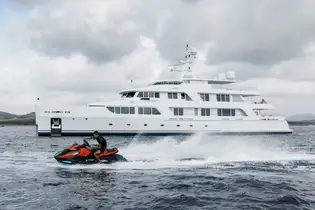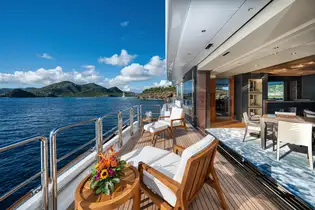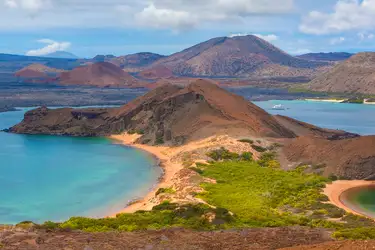
A guide to the Galapagos Islands.
Published 26 May 2022
A guide to the Galapagos Islands
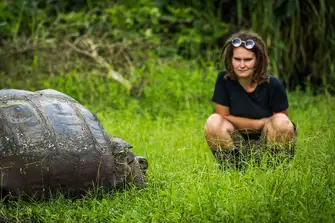
Ever since the Galapagos Islands were explored by Charles Darwin on HMS Beagle for a just few short weeks in September and October 1835, inspiring key parts of his work on evolution, this volcanic archipelago in the Pacific Ocean has held a mystical allure to those with a love of nature. Today, a growing number of superyachts available to charter are venturing to the Galapagos Islands to discover the unique and fascinating natural world that captivated the iconic evolutionary scientist. Only a limited number of vessels are given permission to cruise in the area, so the best way to visit the Galapagos Islands is by superyacht, as it offers a rare level of comfort and luxury on your adventures.
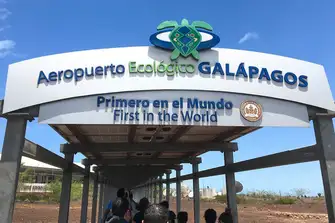
Technically a part of Ecuador, the Galapagos Islands are located approximately 1,000km off continental South America, astride the equator. This isolation is what has led to the unique variety of wildlife species that inhabit the islands, with many found nowhere else on the planet. Just 25,000 people call the Galapagos home, across the 18 islands covering just over 8,000sqkm. There are two airports, with Seymour Airport located on Baltra Island and San Cristobal Airport on San Cristobal Island. Unless you are planning to board your charter yacht elsewhere and cruise to the Galapagos Islands, which might take a long time, you will probably arrive by private or commercial flight at one of the two.
When is the best time to visit the Galapagos Islands?
Although the Galapagos Islands are a year-round destination, thanks to its location on the equator, the seasons are generally split in two, with the cool and dry period extending from June to November and the warm and wet weather expected between December and May.
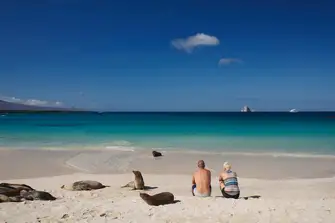
In the rainy or ‘green’ season, you can expect sunny and hot days with rain typically happening in the afternoon but clearing by the evening. During the dry or ‘Garua’ season, rain is less common but there is often a persistent fog, especially on higher ground. Reassuringly, there is no hurricane season in the Galapagos Islands. Air temperatures range from lows of around 16C (60F+) to highs of around 32C (90F+).
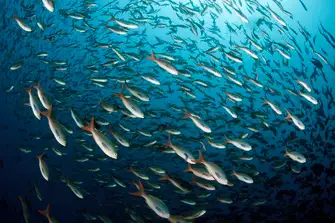
The best time to visit is considered to be during crossover months of November and May, when you can anticipate warmer weather and calmer seas for a more relaxing experience on board as well as better visibility underwater for those who wish to snorkel or scuba dive. However, the tradewinds that accompany the cooler months of the dry season bring with them an abundance of sea life to the islands that make for fantastic nature spotting, including dolphins, whales and other large marine mammals.
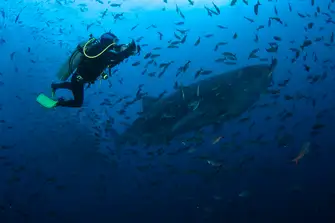
If you are looking to avoid the crowds, be aware that the Galapagos Islands are at their busiest with tourists during Christmas, Easter and Spring Break, and during the school summer holidays.
What to visit on your charter to the Galapagos islands
Visit Witch Hill and Pitt Point on San Cristóbal Island
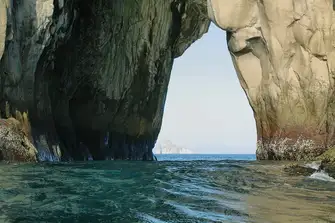
On the northern coast of San Cristóbal island, you will find Witch Hill. An unmissable destination on any yacht charter in the Galapagos Islands, Witch Hill is a stunning white sand beach that served as one of Charles Darwin’s first stops during his tour of the archipelago and is thought to be where he observed the famous finches that inspired his evolutionary theories.
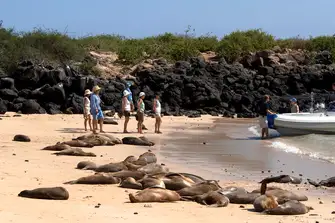
Arriving by tender to this area of restricted access, on Witch Hill you can expect to see the greatest hits of native wildlife, including sea turtles, iguanas, blue footed boobies, pelicans and sea lions (why not join them playing in the water with a snorkel and wet suit). Keep an eye out for the interesting lava formations by the cliffs, as the whole area is the eroding tuff of a volcano.
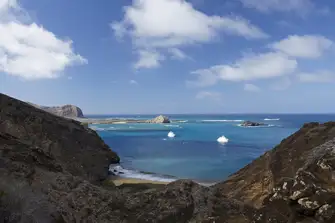
Pitt Point – or Punta Pitt, as it is known to the locals – is located to the east of San Cristóbal. It is a particularly popular spot for those who enjoy exploring the mystical underwater world of the Galapagos Islands, whether snorkelling or diving. Here you will find an array of tropical fish like snappers, king angelfish and Alamo jacks as well as an abundance of sea lions, whale sharks, rays and octopus.
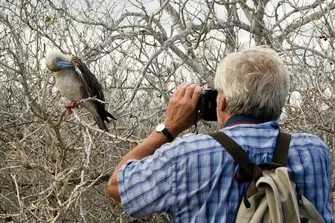
There is a two-hour hiking trail ashore, which will take you to a spectacular viewpoint at the top of the volcanic tuff. Bring your birdwatching skills and keep an eye out for the brightly hued red footed, blue footed and Nazca boobies. And look out for frigate birds, which can be found nesting on the beach alongside sea lions, pelicans, gulls and herons.
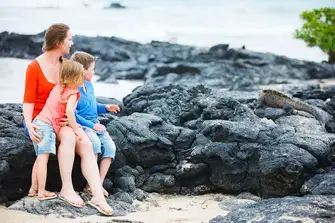
As the heart of conservation and sustainable development in the area, the Charles Darwin Research Station on Santa Cruz is a must-see attraction for anyone chartering a yacht in the Galapagos Islands. Founded in 1964, it serves as a base for over 100 scientists and educators who hail from across the globe. Although it operates as a fully functioning scientific research post with laboratories for marine and terrestrial investigation, visitors are able to tour its exhibition hall, native gardens and public library.
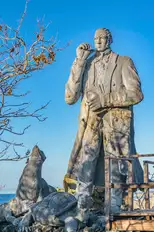
If you are chartering a yacht with children, a visit to the Charles Darwin Research Station is especially inspiring; don’t miss the local photography exhibit, natural history collections and the fantastic Bryde’s whale skeleton on display.
Explore San Cristóbal and visit Kicker Rock
San Cristóbal is the easternmost island in the Galapagos, and was at one time know to the British as Chatham Island. Named after the patron saint of seafarers, San Cristóbal is actually formed from three or four fused, extinct volcanoes and is one of the oldest islands in the archipelago, in geological terms. As home to the longest permanent settlement in the Galapagos it has a fascinating history, having at one time been a penal colony for Ecuadorian prisoners, then a military base and also an export hub for products farmed on the island including sugar, coffee and cattle.
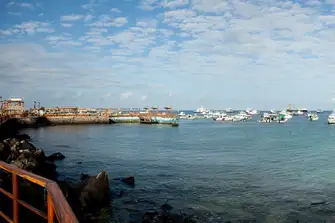
The capital of the Galapagos province, port city Puerto Baquerizo Moreno, is the most populated place to visit, and there are a number of tourist attractions including a statue of Charles Darwin on the site where he is believed to have first disembarked from the HMS Beagle.
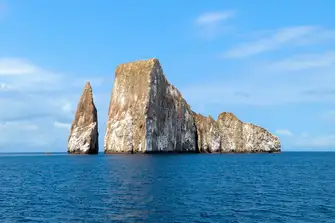
Nearby Kicker Rock – known in Spanish as León Dormido, meaning ‘sleeping lion’, thanks to the islet’s shape – is a popular dive site. The remains of a lava cone that is now split in two, Kicker Rock is most famous for its snorkelling and diving delights. Charter yachts should aim to arrive early in the day to avoid the groups of tourists who are brought to the site by boat; and you can also kayak or paddleboard around the island if you would rather stay above the water’s surface, looking out for the nesting sea birds and basking sea lions that are found ashore.
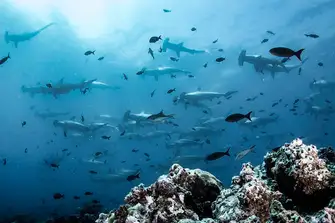
Underwater, beyond the various tropical fish you are likely to encounter species including Galapagos and hammerhead sharks as well as sea turtles, rays and marine iguanas, which use the water to cool off when the heat of the sun gets too much on the rocks.
Climb Prince Philip’s Steps on Genovesa Island
The Prince Philip’s Steps – known as El Barranco in Spanish – is a steep trail ascending to 25m above the water. Arrive by kayak or tender to the beach, where you will be welcomed by the colony of fur seals, then start your climb.
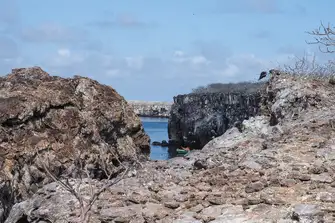
The pathway gives you a front row seat to the spectacle of various seabird colonies including blue footed, red footed and Nazca boobies, Galapagos pigeons and owls. Once you reach the clifftop you will be rewarded with superb views of the lava plains, which make for great photo opportunities. Be sure to bring sturdy hiking boots to tackle the trail.
Walk across the lava flow at Sullivan Bay on Santiago Island
The lunar landscape of the hardened lava flow at Sullivan Bay is one of the top bucket list things to do on a Galapagos Islands yacht charter. Located to the south east of Santiago Island, the Pahoehoe – Polynesian for 'easy to walk' – lava flows date back to the late part of the 19th century.
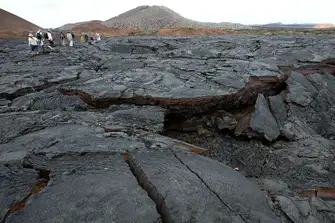
Spend the morning exploring their intriguing formations, taking photos and searching for the hardy pioneer plants that make the inhospitable rocks their home. After, head to the beach for a picnic lunch set up by your charter yacht crew at the water’s edge before you pull on a snorkel and fins to enjoy a swim with the local sea lions.
Swim with penguins off the coast of Bartolomé Island
Named after the second lieutenant on board the HMS Beagle, Sir Bartholomew James Sullivan, this somewhat barren island is found in Sullivan Bay to the east of Santiago Island. It is here that you will find Pinnacle Rock, one of the most recognised sights in the Galapagos Islands that featured in the film Master and Commander.
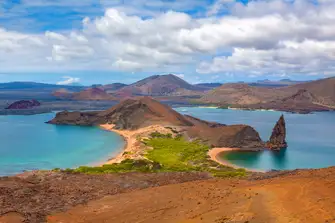
Bartolomé is known for its herons, hawks and penguins. These Galapagos penguins, which are the second smallest penguin species in the world, have built a breeding colony in a cave behind Pinnacle Rock. An expansive and well-known dive site off the island gives you access to seeing the marvellous penguins in the water, where they move far more gracefully than on land, alongside sea turtles, rays and sharks.
Go diving around Wolf Island
As one of the best dive spots in the world, Wolf Island is an essential part of any Galapagos Islands charter itinerary. Being located some 14 hours away from the main group of islands, it is most comfortably experienced from the luxury of a charter superyacht. With a relatively high degree of exposure to waves, surge and currents, it should be attempted by experienced divers only; but the challenges will be worth the effort.
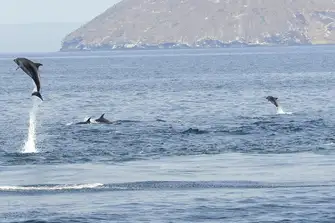
You can expect to see breaching dolphins, turtles, rays and sea lions as well as sharks. There are three main sites to explore: Landslide starts at 10m and is home to turtles, tuna and sharks including hammerhead and Galapagos species. The Caves is more enclosed, with sharks and stingrays in abundance as well as white soft corals and many different kinds of fish.
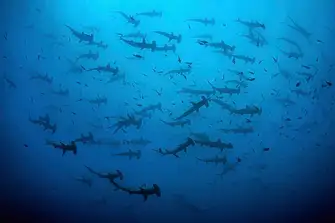
Shark Bay has the most exciting action and is not to be missed; here, a vast school of hammerheads patrols the water with an eerie calmness. Only the bravest divers need apply!
Galapagos yacht charter
STELLA MARIS
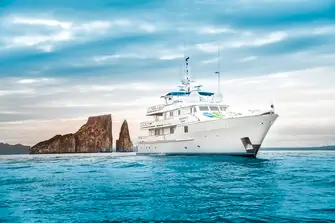
Seen here near Kicker Rock, STELLA MARIS is a 37.8m (124ft) Italian-built Picchiotti, refitted in 2021, that welcomes up to 14 guests in seven cabins.
GRAND DAPHNE
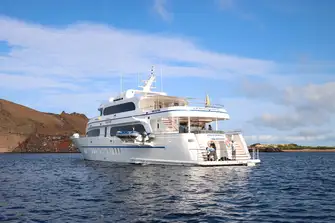
GRAND DAPHNE is a 39.8m (130.5ft) US-built yacht by Broward Marine. She was refitted in 2019 and welcomes up to 12 guests in eight cabins.
Discover more about charters to the Galapagos Islands with our Burgess charter experts. Get in touch today.
To find out more about Burgess’ yachts for charter and yachts for sale, please contact a Burgess broker. Alternatively, get in touch with one of our offices directly: London, Monaco, New York, Miami, Singapore or all other locations.
Yachts, prices and availability are correct at the time of publication.
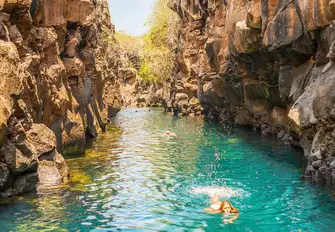
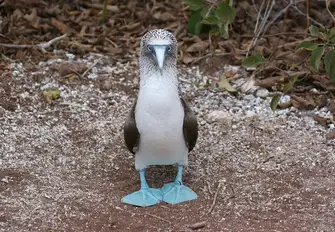
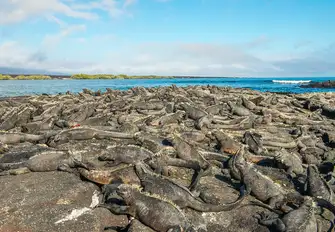
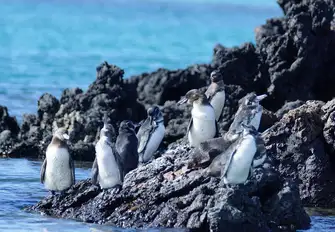
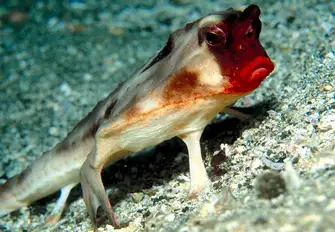
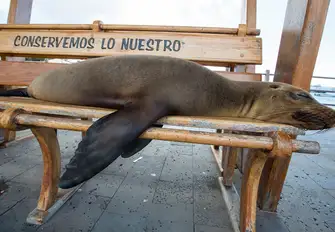
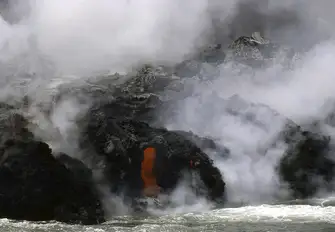
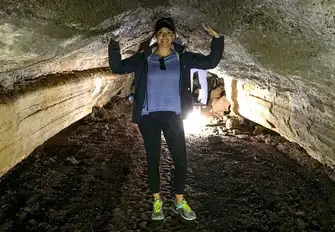
 How can you make sure you get the charter you want?
How can you make sure you get the charter you want?
 Sold: 28.5m ZUMA
Sold: 28.5m ZUMA
 Price reduction on FORCE BLUE
Price reduction on FORCE BLUE
 Palma International Boat Show
Palma International Boat Show
 Giro d’Italia
Giro d’Italia
 Bastille Day
Bastille Day
